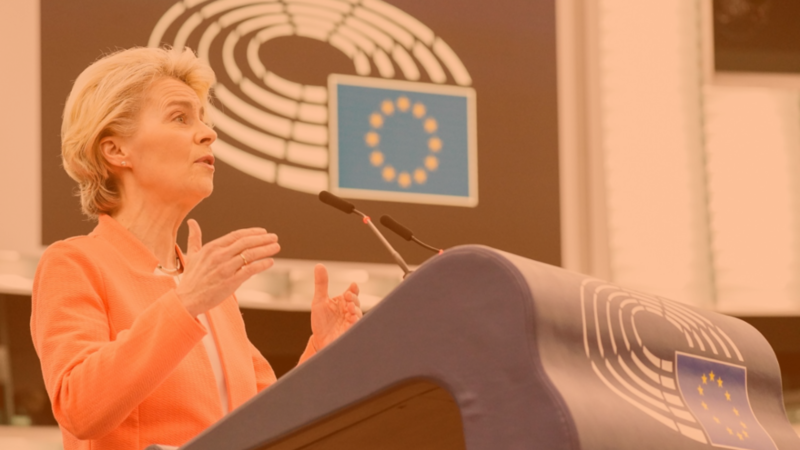Sieges are among the oldest and most brutal of military operations, in which hunger, deprivation, disease and desperation are employed to try and force a besieged people to stop resisting, surrender or die. Israel has held Gaza under a state of siege, at various levels of intensity, since 2005. The long-term, systematically planned nature of the siege needs re-emphasising as a fundamental aspect of the causation of the massacres that have taken place on either side of Israel’s militarised border.
After Hamas launched Operation Al-Aqsa Flood on 7 October 2023, Israel intensified its offense to an absolute state of siege for Gaza Strip and its 2.3 million inhabitants, half of whom are children and have never known life outside of siege conditions. The drastic restrictions that Israel has placed on the enclave—the total blockading of all food, water, fuel, electricity, medicine and supplies—was presented as a response to Hamas’ attack. Yet Israel has been long using manufactured hunger and deprivation as a weapon.
As long ago as 2008, Israel put together a military committee to calibrate exactly how many calories would be needed to permit each Gazan to barely survive, thereby allowing it to calculate and regulate the absolute minimum amount of food that could be allowed enter the besieged enclave. Working from the scientific calculation that an average person requires a bare minimum of 2300 calories a day to survive without starvation, Israel settled on 2279 calories per person. This regime has been actively enforced for fifteen years. Now, with the cutting off of all food to a population already purposely held on the edge of starvation, the prospects are grim, and doubly so considering the total assault on the fabric of life in Gaza. On 18 October Israel bombed five bakeries in Gaza City, killing their staff and people waiting in line for this vital staple, bread, .
As I write, the Western world is still taking credit for helping to get a measly twenty trucks carrying supplies into Gaza through the Rafah crossing. The World Health Organization estimates that what is in fact needed to meet minimum requirements is approximately 500 trucks a day, which says nothing of the added difficulties associated with the logistical systems for distribution of food, fuel and other resources which are under constant bombardment. Once one large shipment of flower from the UNRWA had reached a bakery in the Nuseirat refugee camp, the Israeli military waited for it to be unloaded, the bread to be baked, and for long lines of hungry people to gather, before they bombed the bakery, killing and mutilating as part of a calculated extermination program.
It is worth recalling that almost exactly a year ago, President of the EU Commission Ursula von der Leyen said on Twitter:
Russia’s attacks against civilian infrastructure, especially electricity, are war crimes. Cutting off men, women, children of water, electricity and heating with winter coming—these are acts of pure terror. And we have to call it as such.
Yet when Israel does a more extreme version of exactly this, Leyen takes the opposite approach, hardening her support of ‘Israel’s right to defend itself’.
Since the siege began, Israel has also used access to water, and the quality of water, as a weapon against Gazans. The Global Institute for Water, Environment and Health and the Human Rights Monitor have said in a joint statement delivered to the UN Human Rights Council that the ‘long-term Israeli blockade has caused a serious deterioration of water security in Gaza, making 97% of the water contaminated … The residents of the besieged enclave are forced to witness the slow poisoning of their children and loved ones’. Again, this is a long-term, calculated strategy of siege warfare. Now, with even the contaminated water cut off, all manner of diseases are coming for the Gazans. Cholera, dysentery and other such easily preventable diseases will begin to spread, starting in the overcrowded and bombarded hospitals, which now operate in the dark due to lack of power. This is part of the history of siege strategy: to use disease as a biological weapon to spread suffering and death.
In 2012, the United Nations released a thorough and dispassionate report titled ‘Gaza in 2020: A liveable place?’, which concluded that the future was bleak. It noted:
There will be virtually no reliable access to sources of safe drinking water, standards of healthcare and education will have continued to decline, and the vision of affordable and reliable electricity for all will have become a distant memory for most. The already high number of poor, marginalized and food-insecure people depending on assistance will not have changed, and in all likelihood will have increased.
What actually unfolded was significantly worse than its authors’ bleakest predictions, owing significantly to the repeated wars visited upon the enclave. In the aftermath of the 2014 massacre of Gazans, which Israel called Operation Protective Edge, the distinguished human rights lawyer Raji Sourani gave an interview in his Gazan home. Describing life under the siege, this exemplary, peaceful man told an interviewer:
[E]verybody says it’s better for all of us to die and not go back to the situation we used to have before this war. We don’t want that again. We have no dignity, no pride; we are just soft targets, and we are very cheap. Either this situation really improves or it is better to just die. I am talking about intellectuals, academics, ordinary people: everybody is saying that.
That was almost ten years ago. Four days ago, Sourani’s house was destroyed by airstrikes. He is not alone. According to the UN’s Office for the Coordination of Humanitarian Affairs press statement of 22 October, about ‘15,100 housing units were destroyed, and 10,656 housing units were rendered uninhabitable’. That represents 42 per cent of all houses in the entire Gaza Strip.
Even in their insufferable situation, in 2018–19 Gazans attempted a major, peaceful protest strategy, the Great March of Return. It began as a non-violent act of resistance firmly in the Gandhian tradition, and it was met with brutality. Amnesty International found evidence that ‘Israeli soldiers shot unarmed protesters, bystanders, journalists and medical staff approximately 150–400m from the fence, where they did not pose any threat’. Israeli snipers shot 5,814 people, with many of the injuries from their high-calibre weapons causing permanent disabilities, amputated limbs and other mutilations. One Israeli sniper later bragged about shooting out forty-two protesters’ knees in a single day: he kept the empty cartridges as souvenirs. As Gandhi himself acknowledged, peaceful protest cannot work against a coloniser prepared to resort to atrocity.
Jump forward through five more years of edge-of-starvation rations, poisoned water and calculated collective punishment to October 2023 and Operation Al-Aqsa Flood. One crucial aspect of the attack—systematically under-reported by Western media—was its focus on destroying the siege machinery that surrounds Gaza. After blasting their way through the reinforced concrete and steel walls that entomb Gaza, some Hamas fighters proceeded to attack and capture civilians, while others, as reported in The Nation,
systematically stormed and destroyed a string of Israeli fortifications, checkpoints, machine-gun and snipers’ nests, watchtowers, barracks, and other military emplacements—including the dreaded Erez crossing point—that have been Israel’s primary tools in imposing a withering siege on Gaza’s population since 2005. They inflicted stinging losses on heavily armed Israeli soldiers and border guards and destroyed or disabled armored personnel carriers, bulldozers, and the supposedly impregnable Merkava IV tanks that are the pride and joy of the Israeli army and have been used for years to terrorize Palestinians lacking the kind of anti-armor weapons that Western countries have unquestioningly rushed to Ukraine in the name of resisting invasion, occupation and annexation.
The depth and depravity of the long siege of Gaza shows a profound asymmetry in the power of the two parties on either side of the militarised border. The above paragraphs focus on the human consequences on the Gazan side, as that is rarely discussed in mainstream circles and never admitted by our politicians, yet is fundamental to any understanding of current developments. On the other side of the border, Israel has methodically designed and inflicted upon the Gazans a long-term strategy that has learnt from the history of siege and blockade, and sees its actions as being simply ‘normal’, justified war.
Another important asymmetry is that while Gazans live in enforced poverty, if also with the dignity afforded by their strong family relationships, Israel has fully embraced a ‘free-market’, high-tech developmental path championed by Silicon Valley. To give just one measure of the disparity, employees in Israel’s high-tech sector doubled between 2012 and 2022. A significant part of this booming sector is oriented towards military and security concerns, with Israel becoming a major exporter of high-tech tools of war and domestic ‘securitisation’—commodities tested in ‘The Palestine Laboratory’, to use the title of Anthony Lowenstein’s recent book.
In 2010, UK Tory prime minister David Cameron famously described Gaza as a ‘prison camp’, which captures something of the dynamic of the besieged enclave but also suggests that there is some judicially applied legal punishment being delivered. Rather, a colonial power and its military have permanently interned the people of Gaza, who have committed no crime other than to be the Indigenous people of a stolen country and refugee reminders of the initial ethnic cleansing that gave birth to Israel in 1948.
In 2003, critical Israeli sociologist Baruch Kimmerling more aptly described Gaza as the ‘largest concentration camp ever to exist’. This was not hyperbole: he used the concept precisely. But we can go further. Israel now seems set to expel the inhabitants of the Gazan concentration camp, if they can. Raz Segal, an Israeli historian who directs the Holocaust and Genocide Studies program at Stockton University, offers the still more chilling description of Israel’s siege and massacres it has carried out in Gaza as ‘a textbook case of genocide’. Again, this commentator is not treating the matter lightly. Rather, he draws on the definition established in Article II of the Genocide Convention and applies it fairly. He notes that ‘Israel’s genocidal assault on Gaza is quite explicit, open, and unashamed’, with this being distinct in the history of genocide, though not unique.
The closest historical parallel, in terms of both spark and explicitly stated response, may be found in what was in 1904 called German South West Africa—today’s Namibia. There, Indigenous Herero and Namaqua people engaged in a violent uprising against German colonial occupation, killing over a hundred settlers in a raid. German military commander Lothar von Trotha, who had cut his teeth with another brutal imperialist action in the quashing of the Boxer Rebellion in China, was the serving governor of the African colony. He responded to the raid by giving an explicit ‘extermination order’; in what he described as a ‘race war’, his forces proceeding to systematically massacre, starve and kill in concentration camps up to 100,000 native Namibians over four gruelling years. This was the first genocide of the twentieth century. One can well imagine then UK prime minister Arthur Balfour and US president Theodore Roosevelt extending their support to Imperial Germany after the anti-colonial uprising, saying ‘You are not alone’, and sending weapons. The parallels here are worth considering.
This article was originally published by the Progressive International and has been republished with permission.
Do you want to be informed of DiEM25's actions? Sign up here















